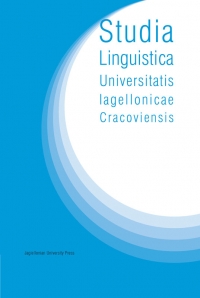Studies on factors influencing syntactic transfer in L3 acquisition
Studies on factors influencing syntactic transfer in L3 acquisition
Author(s): Nicolas NajjarSubject(s): Foreign languages learning, Syntax, Lexis, Semantics, Language acquisition
Published by: Wydawnictwo Uniwersytetu Jagiellońskiego
Keywords: Third Language Acquisition (TLA); Third Language Acquired (L3); Second Language Acquired (L2); First Language Acquired (L1);
Summary/Abstract: This paper examines the factors influencing syntactical transfer in TLA. There are several factors that influence syntactic transfer in TLA: linguistic (such as typology); individual (such as learners’ “attention control” and age); psycho-linguistic (such as psychotypology and the learners’ awareness of cognates); and other factors (such as L2 type and amount of instruction). In summary, it was found that negative syntactic transfer from both L1 and L2 to L3 occurs when (a) languages are typologically dissimilar (b) learners’ “attention control ability” is low, and (c) L2 level of proficiency and exposure is advanced and L3 level of proficiency is low. In contrast, positive syntactic transfer from L1 and L2 to L3 occurs when (a) languages are typologically similar, (b) students perceive these languages as similar, and (c) L1 and L2 level of proficiency is high and L3 level of proficiency is low. Additionally, the learners’ age was found to potentially influence the language (L1 or L2) from which the transfer occurs into L3: L3 adult learners may count more on their L2 as a source of positive syntactic transfer into L3 whereas children may count more on their L1 as a source of positive syntactic transfer into L3. Finally, it was found that when L1, L2, and L3 are equally proximate, it is the L2 that has the primary influence on positive and negative syntactic transfer in TLA.
Journal: Studia Linguistica Universitatis Iagellonicae Cracoviensis
- Issue Year: 138/2021
- Issue No: 2
- Page Range: 79-109
- Page Count: 31
- Language: English

